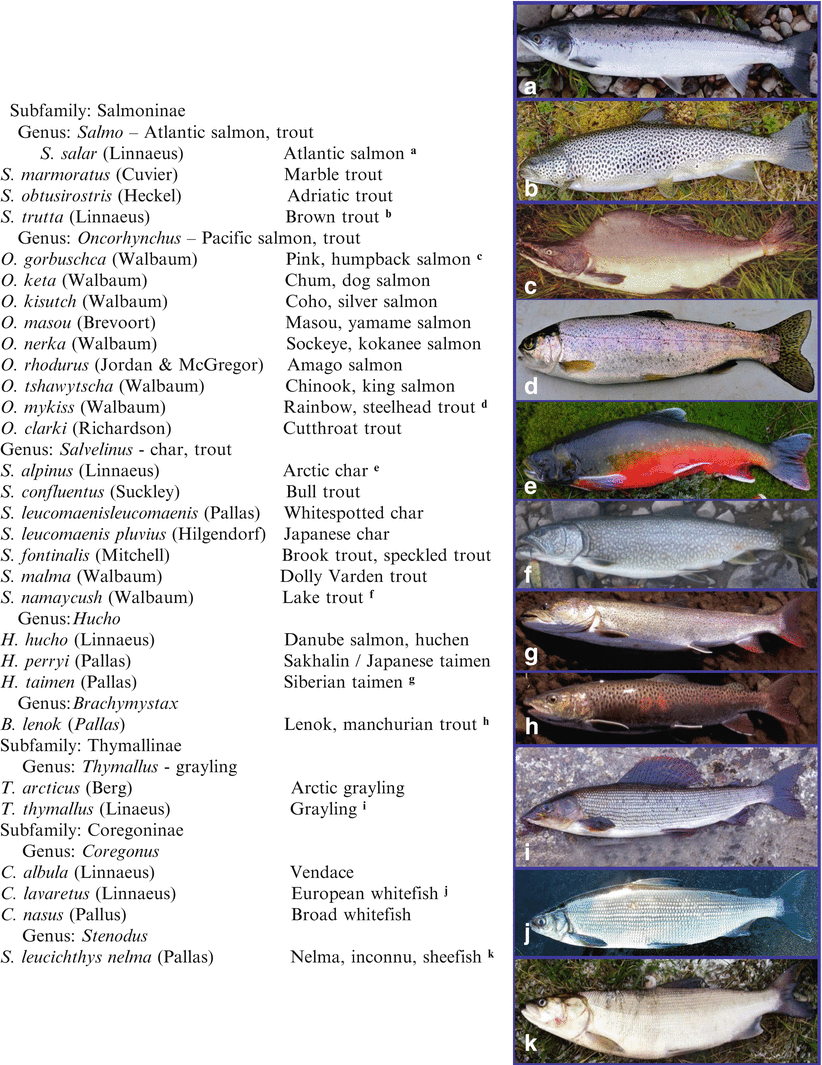, Patricia A. Noguera1 and Trygve T. Poppe2
(1)
Marine Scotland Science, Aberdeen, UK
(2)
Norwegian School of Veterinary Science, Oslo, Norway
Abstract
Global production of Atlantic salmon and rainbow trout continues to increase, however, despite advances in prophylaxis and vaccines, disease outbreaks are one of the major limiting factors for the production of farmed fish worldwide. Infectious agents can increase rapidly in susceptible stocks, especially where the general health status of the population is poor. Therefore, the maintenance of health and the accurate diagnosis of infection are of major importance. This book (A Colour Atlas of Salmonid Diseases) represents our current knowledge of infectious and non-infectious diseases affecting salmonids from the view of a diagnostic pathologist. The reader can familiarise themselves with the wide range of conditions that we consider as ‘abnormal’ thus providing an invaluable guide to those involved in diagnosing fish diseases. Curiosity and an open mind combined with broad knowledge and experience remain important for the fish pathologist.
Keywords
AquacultureInfectious diseaseSalmonTroutProfitabilityAquaculture has been practiced for many thousands of years and history provides numerous examples where farming has emerged to supplement traditional net or line fishing from the sea, for example ancient fish farming in China. World production of fish has not kept pace with human population growth and today the decline or stagnation of capture fisheries has been compensated by the rapid increase of aquaculture production throughout the world. Species such as carp were farmed in Roman and medieval times and remain part of European culture and heritage, now with sea bream and sea bass in the southern European regions.
Salmonid faming largely occurs within latitudes 40–70° in the northern hemisphere and 40–50° in the southern hemisphere. This covers Norway, Scotland, Ireland, the Faroe Islands, Canada, and the North Eastern seaboard of the USA in the north and Chile, Australia (Tasmania) in the south. Minor production also occurs in France and Spain and in New Zealand, Peru and Argentina. By the twenty-first century farmed Atlantic salmon, rainbow trout and to a lesser extent, Arctic char and brown trout, experienced a tremendous growth in cold water aquaculture and was expected to continue to increase by ~15 %, reaching a global production of ~1.8 million tonnes by 2012. For many years Norway has led the world in Atlantic salmon and rainbow trout production with just over a million tonnes in 2011 with a projection of an additional 10 % increase. In Scotland, 2011 marked the salmon sectors 40th anniversary of its first commercial farm, currently producing ~154,000 tones and projecting a growth of 4 % per annum over the subsequent 10 years, and widening their horizons to include a 50 % increase in sea water reared rainbow trout. In the southern hemisphere and since the emergence of Chile as a strong salmon producer back in the 1980s, the region has contributed to the global salmon market with peaks in production similar to those of Norway.
The commercial rearing of salmon starts in fresh water with hatcheries and juvenile growing units and subsequently fish are transferred to sea water as they become ‘smolts’. Growers are held in net pens (cages) or in land based tanks. Rainbow trout typically remain in fresh water throughout their life, although increasingly, production in sea water cages are being utilised. Fish reach the market size around 15–18 months later. The major species from the family are shown in Fig. 1.1


Fig. 1.1
Major groups within the family Salmonidae
Disease outbreaks have always been one of the major obstacles to profitable fish farming worldwide and directly linked to fish survival. A build-up of infectious agents can occur in susceptible stocks, especially where the general health status of the population is poor and occurrence of disease can reduce profit dramatically. The success of health management in controlling the spread of infectious diseases can be illustrated by reference to the devastating impact of the viral disease infectious salmon anaemia (ISA). The infection was first reported in Norway in 1984 among sea-farmed Atlantic salmon resulting in significant loses and economic costs. In 1998 Scottish salmon were reported with ISA, and in 2007 this virus also impacted on the fast-growing Chilean aquaculture and resulted in the temporary collapse of their Atlantic salmon production. Specific control measures including health certification, segregation of year classes, fallowing of sites and the disinfection of water effluent from slaughtering facilities, were introduced in several countries. The practice of pumping sea water into tanks of pre-smolts to facilitate smolting was also ceased. These measures reduced the impact of ISA and other infectious diseases to a level where outbreaks declined significantly. In addition, similar policies have resulted in an overall improvement in the health of farmed fish in other countries with the additional benefit that there has been a marked reduction in the use of antibiotics to control bacterial infections.
Despite all these actions, losses from all possible causes during sea water production can reach 20 % and therefore the health of farmed fish is a major concern as impaired health or any disease state is not acceptable, neither from a welfare point of view nor economically sustainable.
Stay updated, free articles. Join our Telegram channel

Full access? Get Clinical Tree


